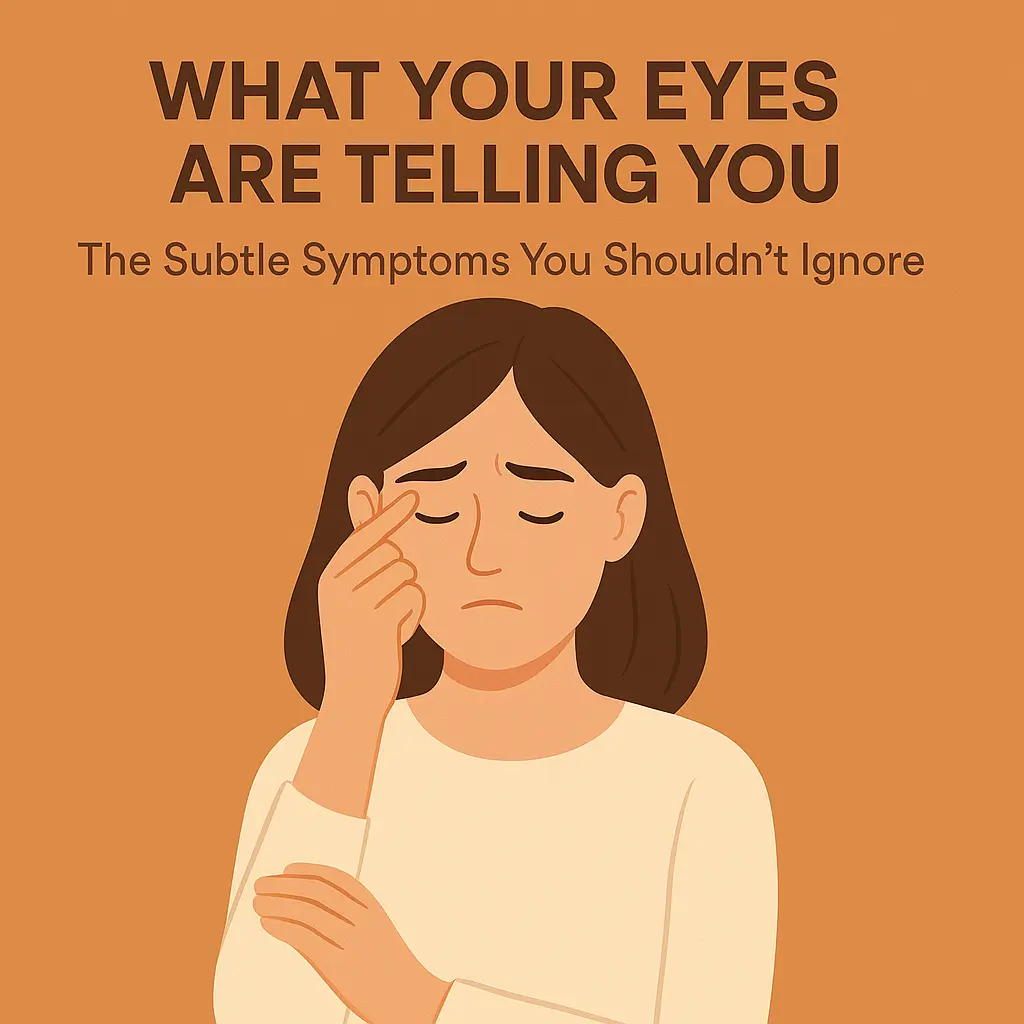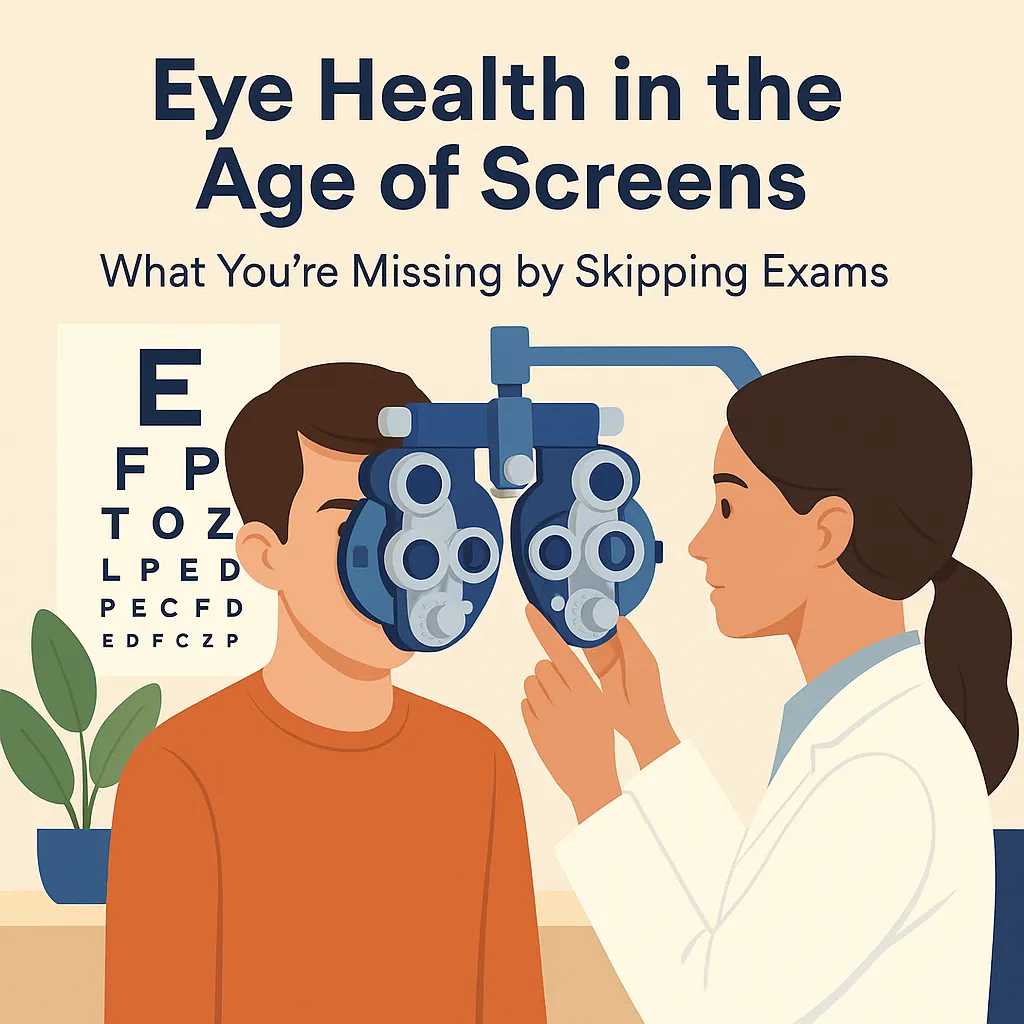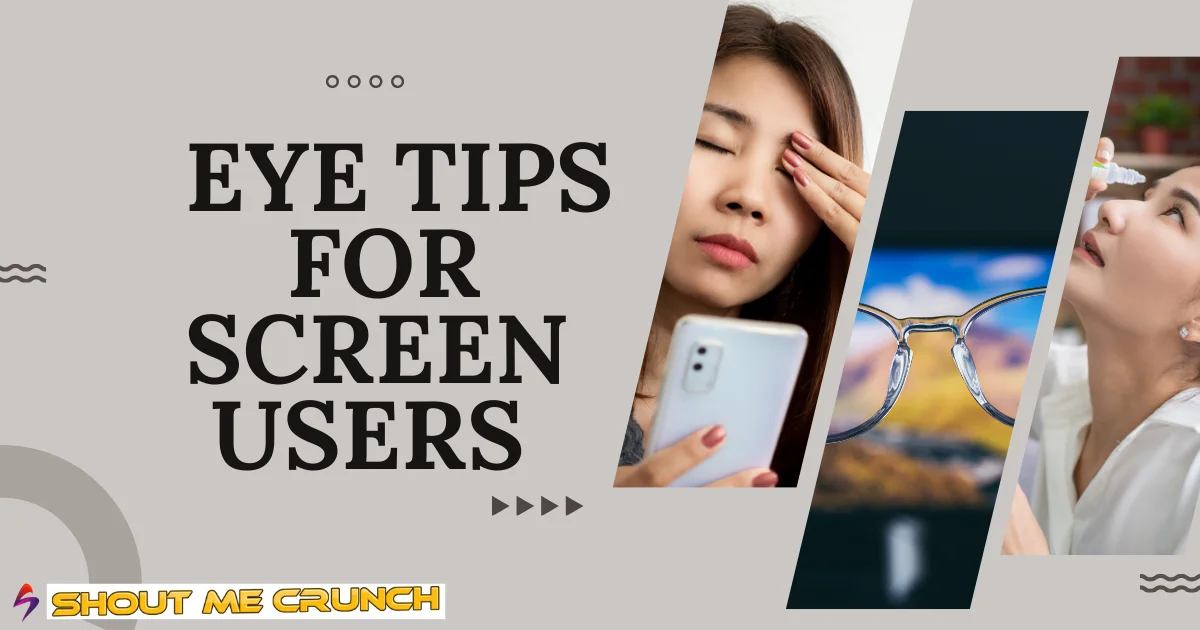Though they are always working—focusing, adjusting to light, reacting to screens—your eyes hardly get the care they need. Many people in the screen-saturated world of today dismiss small headaches, tired eyes, or sporadic blurriness as simply normal. But these minor sensations are often the earliest indicators of visual issues that could silently compromise your long-term health, comfort, and concentration.
Your eyes could be sending you a message whether your chronic aching behind your eyes or a brief haze after hours on the internet. Ignoring these signals can also mean passing on early intervention—and simpler fixes.
The most often disregarded indicators of eye strain and vision problems will be broken down in this article together with their explanations, how important they are, and how regular eye exams help to maintain your vision clear, pleasant, and safe over time.
Contents
Small Symptoms, Bigger Signals
Although your eyes are usually the first to show symptoms of stress, strain, or underlying medical issues, it’s easy to blame eye discomfort on tiredness, thirst, or just a long day. Early diagnosis of problems hinges on comprehending the difference between regular weariness and a possible eyesight problem.
Common symptoms that shouldn’t be ignored:
Blurry Vision
Whether it’s occasional or at specific times of day (like night driving or after screen use), blurry vision can indicate:
- Uncorrected refractive errors (like nearsightedness or astigmatism)
- Digital eye strain
- Dry eye syndrome
Eye Strain or Soreness
If your eyes feel tired, tight, or sore—especially after screen use—it may signal:
- Poor screen ergonomics
- A need for updated prescription lenses
- Underlying focusing issues
Frequent Headaches
Recurring headaches—especially behind the eyes or around the temples—often point to:
- Eye misalignment
- Visual fatigue from screens
- Overworking to compensate for uncorrected vision issues
Light Sensitivity
Becoming more sensitive to sunlight, headlights, or even indoor lighting can be a sign of:
- Dry eye
- Inflammation
- Early signs of eye conditions like cataracts
Dry, Itchy, or Watery Eyes
While common, persistent dryness or irritation may mean:
- Environmental stress
- Screen-induced reduced blinking
- Tear film imbalance or meibomian gland dysfunction
These little problems often develop gradually, so they are often neglected until they start to influence your everyday activities, concentration, or energy.
What Happens When You Ignore These Signs?
About vision, what first seems to be a minor annoyance could gradually become really disruptive. Ignoring eye discomfort or little changes in clarity frequently leads to delayed diagnosis, aggravation of symptoms, and lower quality of life—especially if you spend much of your daily life on screens.
Here’s what can happen without proper care:
Vision Deterioration
Regarding vision, what initially seems to be a little irritation might silently become something lot more disturbing. Ignoring eye discomfort or minor changes in clarity usually results in delayed diagnosis, worse symptoms, and lower quality of life—especially if you spend daily hours on screens.
Chronic Headaches and Fatigue
Eye strain compels your visual system to operate more aggressively, which can set off regular tension headaches and even mental tiredness. Additionally causing posture problems as you slant in or squint to see effectively.
Missed Early Warnings
Many major diseases—including diabetic eye disease, macular degeneration, and glaucoma—begin with no symptoms at all. The only method to find them early could be with a routine exam.
Reduced Productivity and Focus
Not to mention more impatience and eye rubbing, blurry vision and eye discomfort make it more difficult to stay concentrated on displays, which reduces efficiency and increases frequency of pauses.
Ignoring the symptoms damages not only your eyes but also your comfort, health, and capacity to remain bright and involved all through the day.
Why Regular Eye Exams Catch More Than Just Vision Issues
Many people believe that eye tests just cover updating your glasses. Actually, a thorough eye exam examines the whole visual system—from the state of your retina and optic nerve to how your eyes cooperate.
These tests can find issues long before symptoms start to cause disturbance. And given the increase in screen-related ailments, regular checkups become even more vital.
Whether they are renewing a prescription, controlling digital eye strain, or screening for diseases like dry eye or glaucoma, many Idaho residents depend on a reputable eye doctor Idaho Falls for proactive treatment.
In British Columbia, too, many people plan an eye exam Vernon to keep ahead of visual deterioration. These visits let doctors monitor minute changes over time and customize treatment depending on surroundings, screen habits, and lifestyle.
A full exam can detect:
- Uncorrected refractive defects including astigmatism, farsightedness, or nearsightedness
- Changes in eye pressure (which might point to glaucoma)
- Tear film problems and dry eye
- anomalies of retinal or optic nerve development
- Early indicators indicate systematic medical problems such as high blood pressure or diabetes
From your perspective, waiting for symptoms is usually far too long. A local provider can help to keep your vision clear-cut and your health under control.
Everyday Habits That Support Better Eye Health
Although long-term vision treatment is mostly dependent on eye exams, your actions between visits equally important. Even in a world where screens abound, little, consistent practices can help lower eye strain, maintain clarity, and keep your visual system operating as it should.
Simple daily habits to support your eye health:
- Use the 20-20-20 rule: To reset eye focus, spend 20 seconds looking 20 feet away every 20 minutes.
- Change your screen arrangement such that an arm’s length apart and monitors are slightly below eye level.
- Employ artificial tears. Especially in dry or air-conditioned surroundings, keep your eyes moist.
- Blink deliberately; using screens lowers blinking by up to 60%, therefore aggravating dryness and tiredness.
- Stay hydrated; dryness can be exacerbated and tear production affected by dehydration.
- Wear new lenses; don’t overlook little changes; old prescriptions might cause headaches and strain.
- Every hour, get up, stretch, and walk about to help with both physical and eye strain.
Including these routines into your everyday life not only helps avoid pain but also supports improved focus, decreased tiredness, and general wellness.
Your Eyes Are Talking. It’s Time to Listen
One of the most effective instruments you use every day is your eyes; yet, when something seems “off,” one of the easiest things to ignore. Those little symptoms, though,—blurred vision, dryness, headaches—are not random discomforts. Messages from your body alerting you to check in.
The bright news is Early detection of most eyesight problems guarantees treatability and manageability. Regular eye checkups along with regular behaviors help to avoid minor issues from becoming severe disruptions.
Pay attention to what your eyes are pointing out. They may be whispering now, but if you wait too long they could begin to roar.







![[Quiz] 10 Questions to Differ Dementia From Age Related Memory Loss? Dementia](https://www.shoutmecrunch.com/wp-content/uploads/2018/09/Dementia.jpg)
